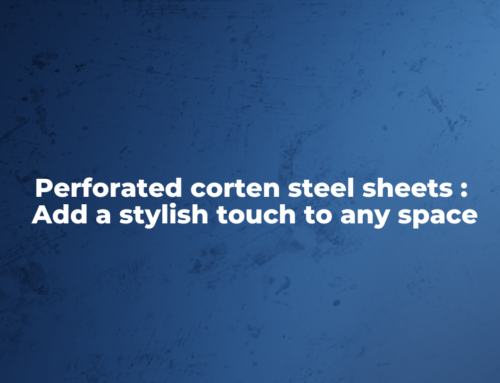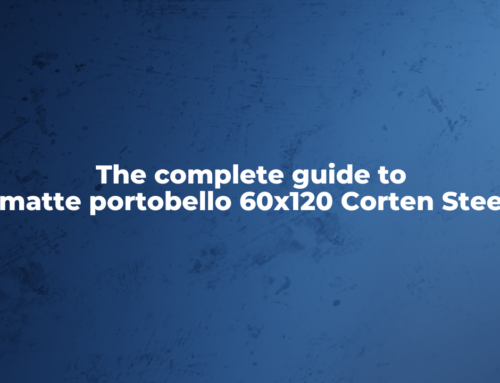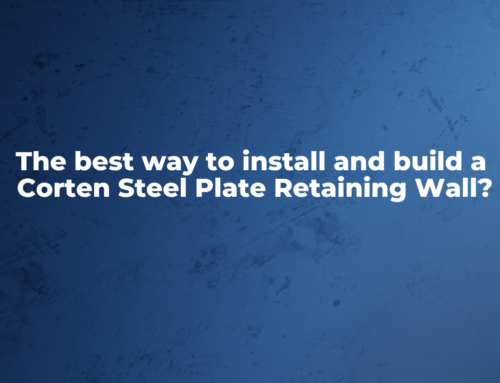Corten Steel Round Planters are made of heavy-duty steel used in construction and manufacturing. The round shape of the planters makes them ideal for planting vegetables, flowers, fruits, and other outdoor plants. These planters are all very attractive and work well as planters.
The installation process is easy, and you can place your items indoors or outdoors. Plants can be placed in any yard, corten steel circular planters in the garden, or patio area and enjoyed immediately. In addition to looking great in any garden, the Corten Steel Round Planters will look great in a family dining room or living room as well.
Planters are also made from hardwood stoneware. With its long-lasting durability, it can withstand being outside. Planters can be stained to create a warm color, which increases their value.
There are three different sizes of corten steel circular planters all of which feature a round design. They can be used for a variety of gardening tasks. These planters are made of recycled cast iron and galvanized steel, which makes them both beautiful and easy to maintain.
As a result, they have a unique resistance to rust. They will last for years without the maintenance required for most other types of planters. In addition, the planters are very durable, and they can easily be dropped, damaged, or knocked over without causing any damage. The size is perfect for our small backyard. Rated 4 out of 5 by a mom of 4 boys from Perfect for our garden
We have an oval garden in the middle of the beds. Despite its small size, it fits perfectly without shading or wood. We leave it in the sun all day and shade it at night. This is a very sturdy piece of furniture and we are very pleased with the way it looks in our yard. It’s also easy to assemble and comes fully assembled, so you don’t have to mess around!

The Key Benefits of Corten Steel are:
Corten steel is a famous brand for its industrial products. Its corten steel circular planters are known for their durability and functionality. Its products are widely used in the construction industry. This is the best tool that can be bought for home gardens, workshops, and warehouses. It is sturdy and durable. It has a high-quality handle with a comfortable grip for usage. The sturdiness of this tool is excellent as it can withstand heavy loads without deformation or breakage. This item will help you to get the best garden mania.
Corten steel round planters are a great way to improve the aesthetics of your garden. The round shape of the planter gives it a very clean look and makes it easy to clean and maintain. They also have a very wide range of colors available, from white to black. This ensures you have a planter that will match your overall style and also make your garden look larger. This is great if you are looking for a small planter, but not necessarily a large one. A round shape allows you to fit a smaller pot inside but still keeps it looking neat and tidy.
Our Corten Steel Round Planters are an easy way to make your garden look more attractive and therefore stand out from the crowd. We stock these in a range of different colors including White; Black; Blue; Red; Yellow; Green. Please note that these are not in a case and therefore do not come with the original packing materials. This is because these planters are made from high-quality 12mm corten steel. If you wish to keep the original packaging, then please purchase the matching Case.
Longevity beyond compare. Corten Steel material loss occurs glacially [in Central London, 0.8mm over 40 years and 2.0mm over 120 years]
Cost-effective. Due to the fact that it does not require painting or repainting, Corten Steel is by far the best value-for-money sheet metal over a 10-year lifespan.
Specification Considerations include:
Suitability.
The durability of Corten Steel will be influenced by the environment, and its aesthetic may change slightly over time. In all practical landscape product applications, Corten Steel is suitable for any environment, including industrial and coastal environments.
Thickness:
For most environments and applications, Corten Steel thicknesses of 2.0mm or 3.0mm are adequate for +25 years of longevity.
To mitigate the forecast material loss over 40 years, an additional 1.0mm thickness should be added.
Thicknesses greater than 6.0mm are extremely expensive and can only be commercially justified if the brief truly stipulates a 120-year lifespan.
Run-off.
There is often a great deal of overstatement about run-off from Corten Steel. As long as the metal is pre-weathered before supply [as IOTA does as a standard service], run-off is seldom a problem.
Finishing
Unfinished Corten Steel should not be painted, waxed, or lacquered. The surface finish of Corten Steel is
[i] not necessary,
[ii] will not be permanent, and
[iii] negates its USP [its extraordinary corrosion resistance in its natural, exposed state].
It has been argued that a bitumen-damp proof membrane should be applied to Corten Steel when it cannot maintain ideal wet/dry cycles to establish its protective surface oxide [such as the inside of planters].
However, this is only cost-justifiable when longevity expectations are genuinely over 40 years.
The full article below explains the details in more detail:
What Is Corten Steel?
Corten steel refers both to the original product COR-TEN and to other generic grades of ‘weathering’ steels. For most landscape industry applications, this group of similar steels offers the same benefits.
Known for its corrosion resistance and tensile strength, this steel is sold under the trademark COR-TEN. As Corten is corrosion-resistant and has a specific alloy combination, it does not require painting to maintain its strength.
SSAB [Swedish Steel] produces COR-TEN under license from US Steel. CR material [2.5mm and below] is rolled in Sweden, while HR material [3mm to 30mm] is rolled in Finland. IOTA uses these specific materials, where COR-TEN Steel is specified.
S355JOW and S355J2W are other grades of ‘weathering’ steel. The generic versions of COR-TEN are more recent, cheaper, and definitely have their place. Landscape products are rarely required to meet the most stringent technical performance standards [for instance, they are rarely safety-critical], and the cost is often a major factor. In many landscape projects, ‘weathering’ steel may be the most appropriate specification, which IOTA also offers.
The Science
The main metallurgical difference between Corten Steel and ordinary structural steel is the addition of chromium, copper, and nickel alloying elements. Weathering makes Corten Steel more resistant to atmospheric corrosion than other steels by forming a protective layer on its surface.
Continually, the protective layer develops and regenerates under the influence of the weather. Through the same process, Corten can also ‘heal’ itself. Essentially, if a scratch is made on the surface, the exposed area will regenerate its protective layer, blending in with the surrounding area over time.
Contrary to common belief, Corten Steel does not like to be constantly dry or wet. What Corten Steel loves most is being wet, then dry, then wet, then dry – and so on. By repeating wet-dry cycles, Corten’s surface weathers more effectively [and thus its ultimate lifespan is improved]. As a result, Corten Steel is especially suited to the great British climate…!
Unlike rusting, this process of weathering is more akin to curing and patination that also protect other long-lasting metals, including Zinc, Lead, Bronze, and Copper. In reality, Corten’s surface layer resembles rust, but it is actually controlled oxidation that forms a corrective layer across the metal rather than damaging it.
Corten’s controlled oxidation is fundamentally non-progressive, unlike Mild Steel’s progressive rusting. Wear and tear, as well as atmospheric pollution, inevitably cause some material to be lost from the surface of Corten Steel over time. Corten Steel, however, loses material glacially slowly.
The Key Benefits Of Corten Steel And Specification Considerations
The Aesthetic
In relation to Corten Steel’s characteristic aesthetic, this can either be a key benefit or not, depending on whether you like Marmite…? However, it needs to be considered on the list.
Corten develops over time a variegated patina of bronze, rust, and copper hues – colors that are ideal for both naturalistic and architectural planting schemes. In addition to these benefits, it also offers a number of others.
Longevity
The longevity of Corten Steel is widely acknowledged as one of its key benefits, even among those who have not yet adopted it.
According to the generally accepted classification of EXTERIOR environments, as described in ISO12944: 2018, the vast majority of landscaping schemes in the UK would be categorized as C3 [urban and industrial atmospheres, moderate sulfur dioxide pollution, or coastal areas with low salinity]; and best-case C2 [atmospheres with low levels of pollution: mostly rural areas], and worst-case C4 [industrial areas and coastal areas with moderate salinity].
There is material loss from both sides of most landscaping products [such as a planter], and the weathering process is not linear. Material loss occurs in the first year of a child’s life in 80% of cases.
As a result of these considerations, one can expect the following material loss from Corten Steel over a 40-year lifespan:
C2 0.8mm
C3 1.0mm
C4 1.4mm
Corten Steel will lose the following amount of material over a 120-year lifespan:
C2 2.0mm
C3 2.0mm
C4 3.0mm
A material loss of 0.8mm in a C3 environment [say, Central London] after 40 years, or 2.0mm after 120 years is impressive. As a comparison, Corten Steel loses its surface material roughly 25 times slower than unprotected low-carbon structural steels, and roughly 200 times slower than the cheapest Mild Steels.
Considerations in specification
Corten Steel’s longevity in C3 environments is influenced by the following key considerations:
Despite the thickness of 2.0mm Corten Steel, IOTA’s shrub planters will last for +25 years, which is the maximum lifespan that is generally expected.
For tree planters with a lifespan of +25 years, we recommend a 3.0mm thickness.
There is no commercial argument for thicknesses greater than 2.0mm or 3.0mm for +25 years of longevity.
Adding 1.0mm to each of the above thicknesses is recommended to mitigate the forecast material loss over the next 40 years [for example, shrub planters should be 3.0mm, and tree planters should be 4.0mm].
IOTA frequently receives RFQs specifying extreme Corten Steel thicknesses between 6.0mm and 10.0mm, for structures without exceptional loads. As thickness increases, the cost rises almost exponentially. In light of the above, these kinds of thicknesses can only be commercially justified if the brief mandates + a 120-year lifespan – and how many of those landscaping briefs are there?
In addition to longevity, there are two other specification considerations:
If Corten Steel cannot maintain the ideal wet/dry cycle to establish the protective oxide [such as inside planters], a bitumen-damp-proof membrane may be used to seal inside the steel. As most longevity expectations do not warrant the additional costs, we rarely get asked to do this. If the budget allows and the longevity expectations are genuinely 40-120 years, then it’s worth it.
The chlorides in seawater inhibit the development of the protective layer on Corten Steel. C2 or C3 environments are fine – but the landscaping products in C4 should be hosed down after every heavy winter storm. Corten Steel, unpainted, is not officially recommended for C5 environments [industrial areas with high humidity and aggressive atmospheres, and coastal areas with high salinity].
As a result, Corten Steel can be specified with confidence, in terms of its longevity, so long as the above guidelines are followed.
Cost
“For anything over a 10-year lifespan expectation, Corten Steel offers by far the best value-for-money of all metals”.
The reason for this is because:
It is the cheapest of the sheet metals which do not need to be painted [which include 304 / 316-grade stainless steel with a brushed or grained finish – which are much more expensive].
The price of Corten Steel is only about 15-20% higher than that of galvanized mild steels, 1.4003-grade stainless steel, or aluminum that needs to be painted.
These painted metals require periodic refinishing, typically every 10-12 years, with an on-site wet spray application – and these will progressively negate the initial price discount compared to Corten Steel.
Galvanised Mild Steels, etc. will cost, in total, about the same as Corten Steel after their first repaint; after their second or third repaint, they will cost significantly more.
Specification Considerations
It is always cheaper to use Mild Steel as a sheet metal option [and assume a 10-year lifespan] when minimizing initial expenditure [and assuming a 10-year lifespan expectation]. The steel can then be ‘galvanized’ in some way with a protective zinc layer [such as Zintec Steel], and then coated with polyester powder coat [PPC]. Zintec Steel PPC is hard to beat from a cost perspective if the longevity expectation is less than 10 years.
However, Corten Steel is only about 20% more expensive than Zintec Steel PPC. In addition, Corten Steel offers a positive cost advantage over other metals that need to be painted periodically [Galvanized Mild Steel, such as Zintec Steel, 1.4003-grade Stainless Steel, or Aluminium].
Other steels that don’t require painting [such as 304 / 316-grade stainless steel with a brushed/grained finish] are much more expensive. 304 / 316-grade stainless steel is about 30-40% more expensive than Corten Steel for a typical IOTA tree planter.
The cost of metals other than steel, which do not need to be painted [such as Lead, Copper, Brass / Bronze, or Zinc] is about 200% higher than Corten Steel.
The generic forms of Corten Steel, such as S355JOW and S355J2W, are actually very good value for money, especially for typical landscape products. Consequently, Corten Steel should never be excluded because of its cost. The fact that Corten Steel also has virtually no maintenance overhead, as below, makes Corten Steel a very good value option.
Maintenance
Landscape maintenance requirements for Corten Steel are either ‘nothing’ or ‘vanishingly little’ in most environments. The only maintenance required would be purely aesthetic, rather than functional or structural.
Run-Off
It is one of the myths about Corten Steel that this article will hopefully debunk: run-off from Corten Steel is often wildly overstated. As a matter of fact, and as a matter of science, it exists. In practice, however, it simply isn’t an issue if a few sensible steps are taken – both during specification and commissioning as well as during maintenance.
IOTA always supplies pre-weathered Corten Steel products [such as planters, benches, pergolas, tree guards and grilles, etc.]. During the weathering process, we apply treatments to the Corten Steel to accelerate its natural curing and patination. A pre-weathered product arrives on site already looking good [uncured Corten is a dull silver-grey]; and, in addition, 90% of the run-off has already taken place.
We can also hold and pre-weather the Corten for longer if the project schedule allows – and, after 2-3 months, the steel is stable and run-off is virtually nonexistent. After 2-3 months, and even when soaking wet, you have to rub really hard to get anything off the Corten.
Corten Steel should NOT be placed on porous substrates such as FFL. For example, if the FFL is Travertine, Sandstone / Limestone or Marble, or expensive Hardwood Decking, then it would not be wise to put Corten Steel planters on top. It would be ideal to place the planters on the insulation layer underneath [either on Wallbarn mini-pedestals or a drainage mat], then pave/deck up to the sides of the planters, leaving a gap of 5-10mm. When the FFL is non-porous [such as Granite, or Millboard], then Corten Steel can be placed on top as long as it has been professionally pre-weathered as supplied by IOTA.
Graffiti
No matter where it occurs, graffiti is unwelcome on Corten Steel.
Even if the graffiti is carefully removed through solvent dissolution, the ‘ghost’ of the graffiti will remain visible – at least for some time – under Corten Steel. Generally, it is better to sand the entire piece back to a uniform pattern, and then let the Corten ‘self-heal’ naturally if the graffiti is old [and the ghosts of the graffiti are still visible after removal].
On the subject of maintenance, we are often asked why the Corten Steel cannot be ‘sealed’. It is ultimately a matter of professional opinion, as some landscape product suppliers do indeed offer that option.
According to IOTA, Corten Steel should be left unfinished – not painted, waxed, or lacquered – for the following reasons:
[i] is not needed,
[ii] will not be permanent, and
[iii] negates Corten Steel’s distinctive USP [its extraordinary corrosion resistance and extreme longevity in its natural state]. Furthermore, any such surface finish will be cost-prohibitive to maintain in the future, whereas raw Corten, left to its own devices, is an exceptionally low-cost material with a lifespan of over a decade.








Leave A Comment